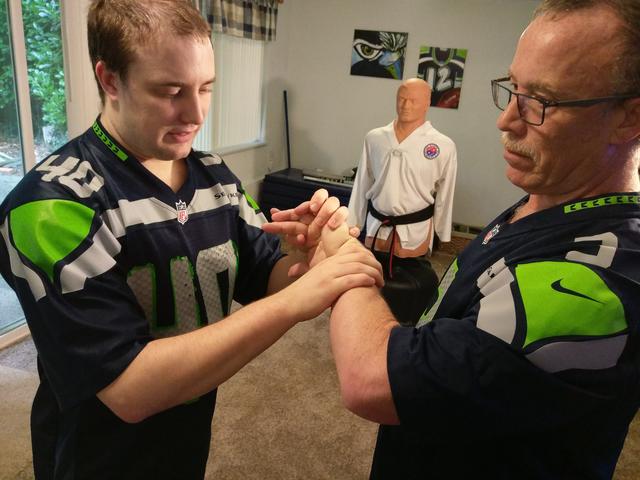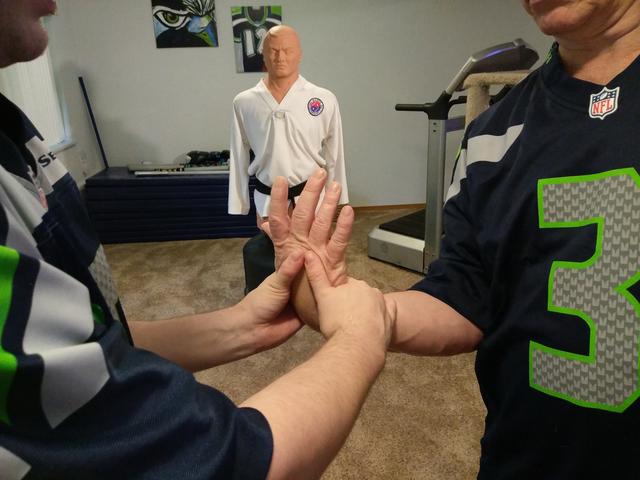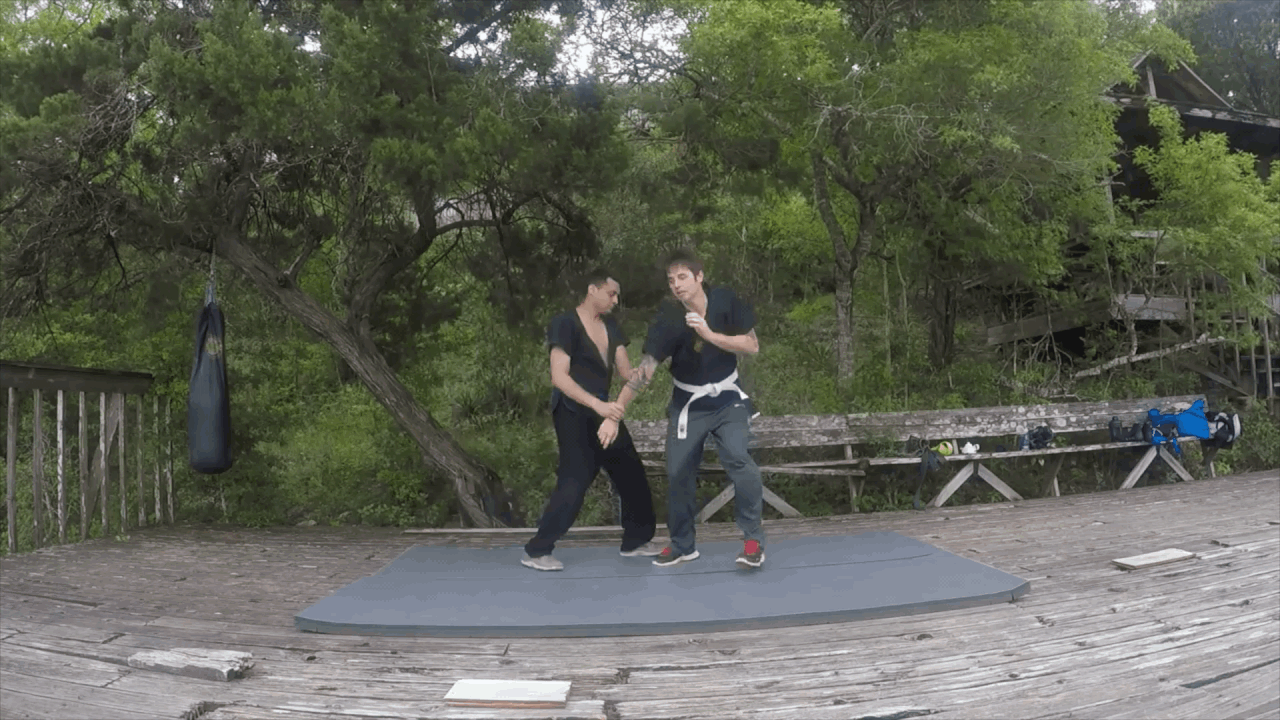skribs
Grandmaster
I've been working on wristlocks a lot lately. Trying to apply what I learned in Hapkido to BJJ.
One thing I think is interesting is the very different approach both arts take to what I would consider to be the fundamental wristlocks of the art. In HKD, wristlocks are typically made by going 2-on-1 on the hand and wrist that you're attacking. A couple examples from a thread I posted a long time ago in the HKD forum:


I would argue these are the two most common wristlocks in Hapkido. I call them the Z-Lock (left) and V-Lock (right), although at my HKD school these were named "#8" and "#14". There are many other common moves that can be enhanced by wristlocks, but these two are the most common that focus on the wristlock itself.
Wristlocks in BJJ tend to be done either:
My favorite BJJ-style wristlock is to finish an Omoplata with a gooseneck.
I've been going after wristlocks on 4 different people in my gym so far. It's been interesting the responses I've gotten.
One thing I think is interesting is the very different approach both arts take to what I would consider to be the fundamental wristlocks of the art. In HKD, wristlocks are typically made by going 2-on-1 on the hand and wrist that you're attacking. A couple examples from a thread I posted a long time ago in the HKD forum:


I would argue these are the two most common wristlocks in Hapkido. I call them the Z-Lock (left) and V-Lock (right), although at my HKD school these were named "#8" and "#14". There are many other common moves that can be enhanced by wristlocks, but these two are the most common that focus on the wristlock itself.
Wristlocks in BJJ tend to be done either:
- Pin the elbow to the mat, then gooseneck.
- Trap the hand against your body, then pull on the elbow.
My favorite BJJ-style wristlock is to finish an Omoplata with a gooseneck.
I've been going after wristlocks on 4 different people in my gym so far. It's been interesting the responses I've gotten.
- A teenage gray belt (that he and Professor have both given me the okay to wristlock), I just catch him in HKD techniques left and right.
- A blue belt that "grew up" with me in class, he's too stubborn to tap to them unless I get him pinned down. However, I haven't hurt him, so I guess he was right not to.
- A blue belt with national-level wrestling talent, when I start hunting wristlocks, he gets very careful in how he approaches me. Normally he completely smashes me, but this gives me some openings to make some moves...before he gets into a dominant position and then I've lost it.
- A purple belt that I've tried one wristlock on, and then he proceeded to smash me harder than he's ever smashed me before. The exact opposite of #3. And of course, after he gets me in side control, he wristlocks me. And of course, I went full hypocrite and gave him a hard time about using wristlocks.
- A self-defense version of positional rolls, where one person would create a situation you need to defend yourself from. This was always fun and engaging, and a decent way of pressure-testing if your technique would work in that situation.
- A "live roll" which basically ended up with us never-ending swimming for a 2-on-1 grip, and usually resulted in a standing stalemate.

